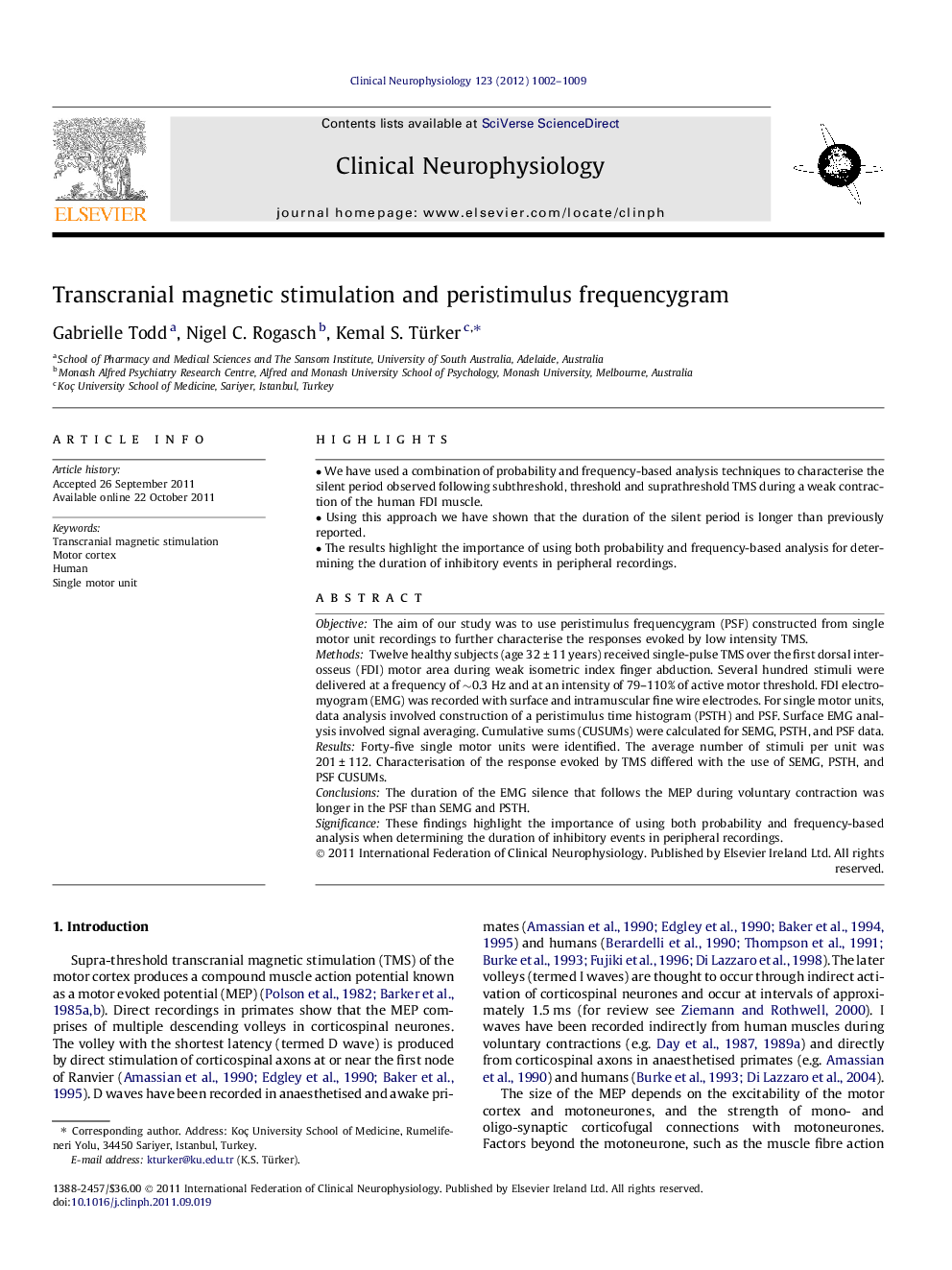| Article ID | Journal | Published Year | Pages | File Type |
|---|---|---|---|---|
| 3045294 | Clinical Neurophysiology | 2012 | 8 Pages |
ObjectiveThe aim of our study was to use peristimulus frequencygram (PSF) constructed from single motor unit recordings to further characterise the responses evoked by low intensity TMS.MethodsTwelve healthy subjects (age 32 ± 11 years) received single-pulse TMS over the first dorsal interosseus (FDI) motor area during weak isometric index finger abduction. Several hundred stimuli were delivered at a frequency of ∼0.3 Hz and at an intensity of 79–110% of active motor threshold. FDI electromyogram (EMG) was recorded with surface and intramuscular fine wire electrodes. For single motor units, data analysis involved construction of a peristimulus time histogram (PSTH) and PSF. Surface EMG analysis involved signal averaging. Cumulative sums (CUSUMs) were calculated for SEMG, PSTH, and PSF data.ResultsForty-five single motor units were identified. The average number of stimuli per unit was 201 ± 112. Characterisation of the response evoked by TMS differed with the use of SEMG, PSTH, and PSF CUSUMs.ConclusionsThe duration of the EMG silence that follows the MEP during voluntary contraction was longer in the PSF than SEMG and PSTH.SignificanceThese findings highlight the importance of using both probability and frequency-based analysis when determining the duration of inhibitory events in peripheral recordings.
► We have used a combination of probability and frequency-based analysis techniques to characterise the silent period observed following subthreshold, threshold and suprathreshold TMS during a weak contraction of the human FDI muscle. ► Using this approach we have shown that the duration of the silent period is longer than previously reported. ► The results highlight the importance of using both probability and frequency-based analysis for determining the duration of inhibitory events in peripheral recordings.
